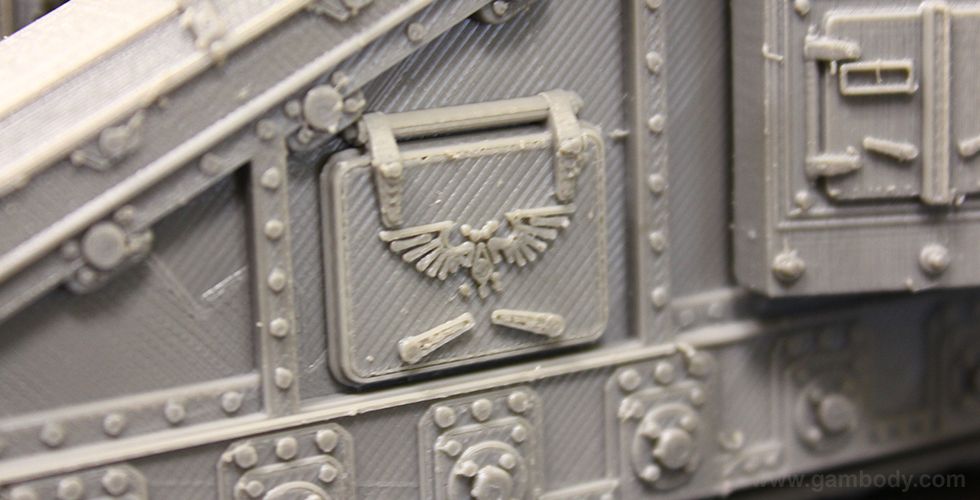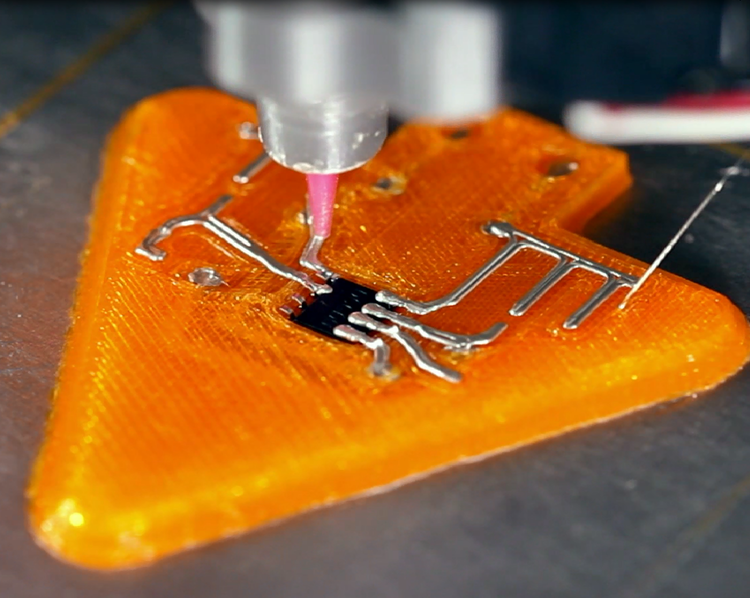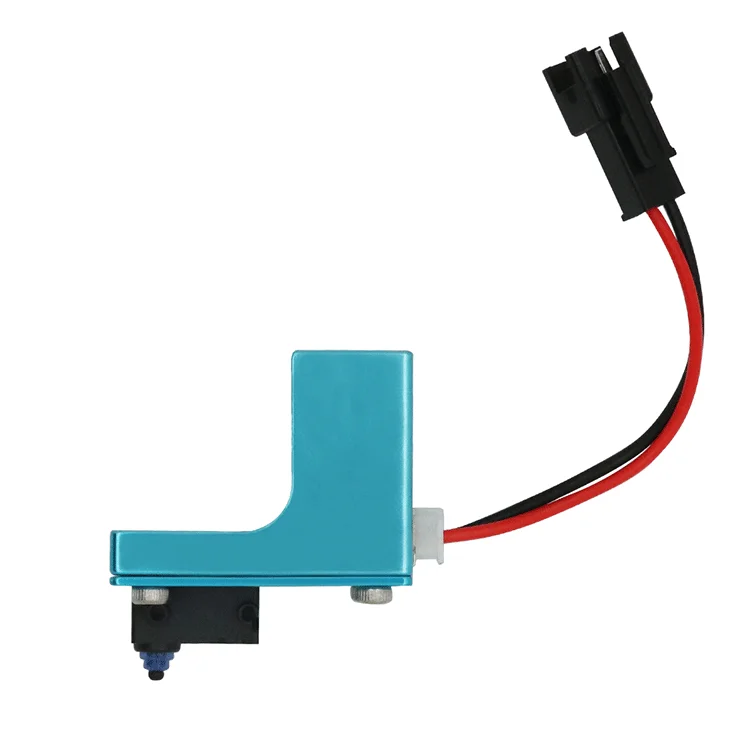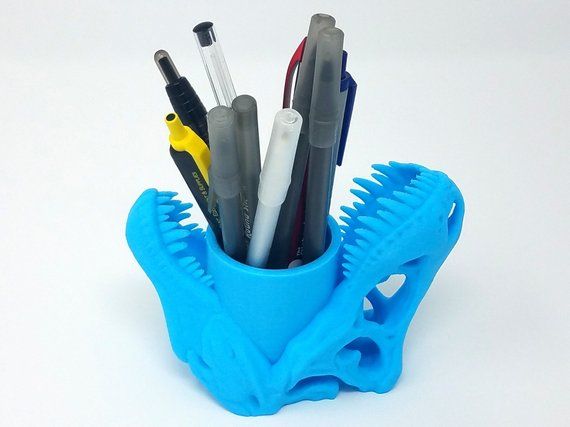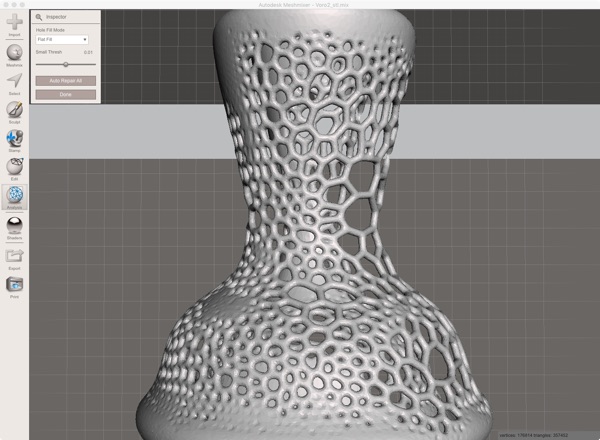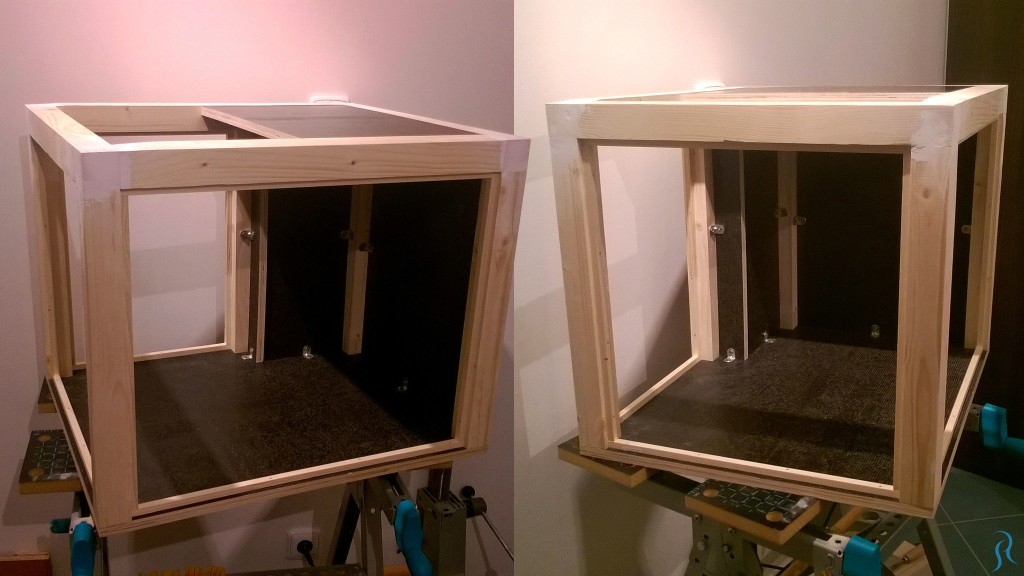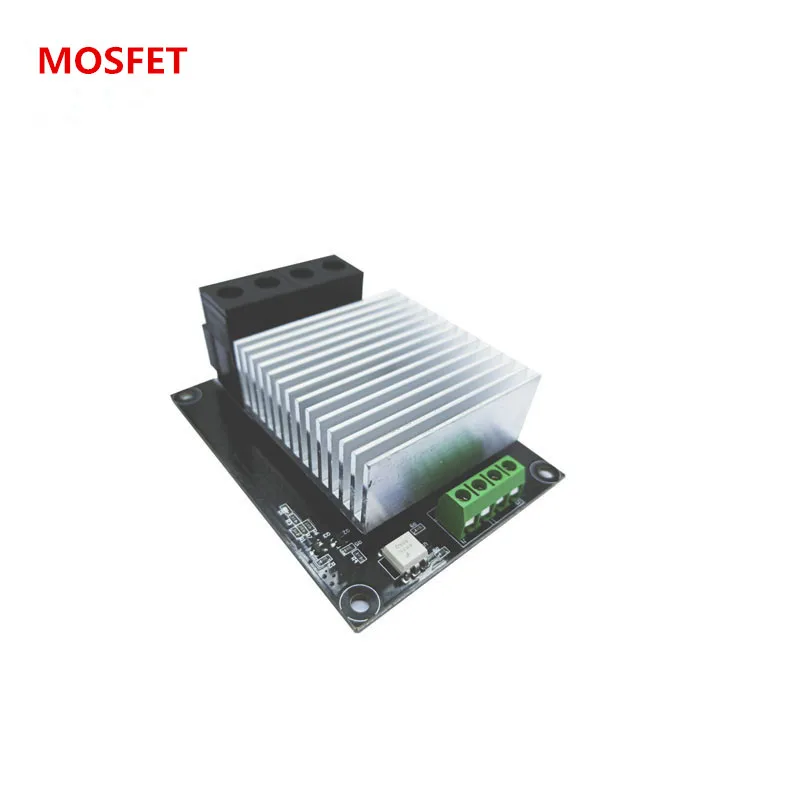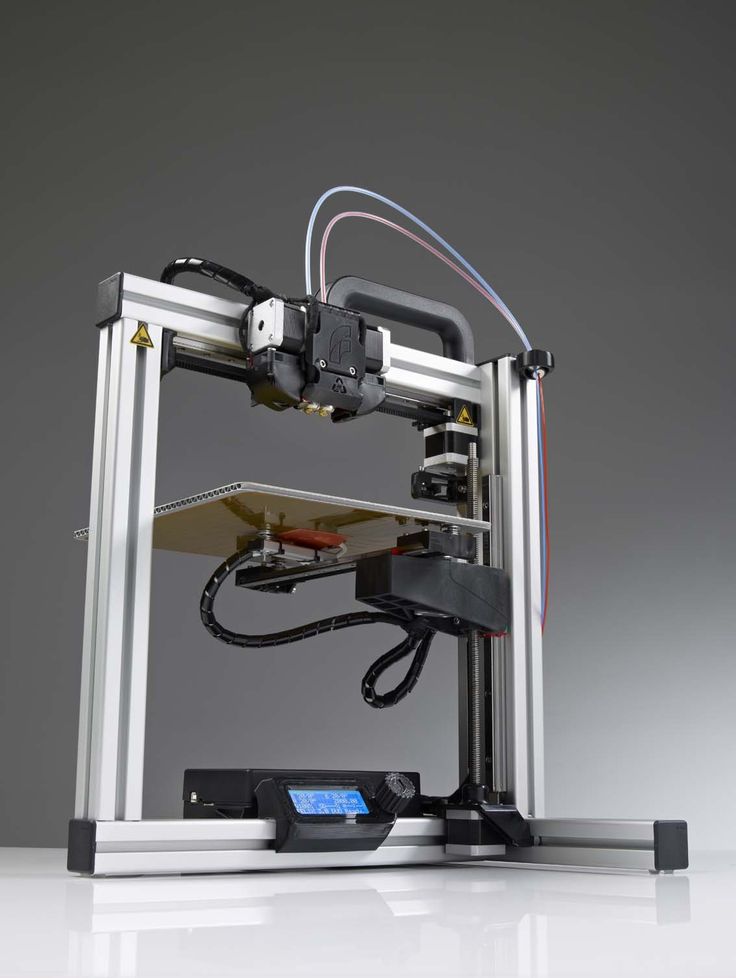3D printing maritime
Taking a Closer Look at 3D Printing Applications in the Maritime Sector
3D printing news Rankings Taking a Closer Look at 3D Printing Applications in the Maritime Sector
Published on April 28, 2022 by Alexandrea P.
It is common knowledge that additive manufacturing is helping the conquest of space, but did you know it can also be found in our oceans? From 3D printed boat propellers to submarine parts and metal keels, the applications of 3D printing in the maritime sector are numerous. Some ships are even equipping themselves with 3D printers so that their crew can design components on demand quickly, all in the middle of the ocean. Today, we’d like to take a look at some of the projects that have relied on 3D technologies to develop their solutions for the maritime industry at large – please note that we have deliberately excluded 3D printed ships from the list.
The US Navy and 3D Printing for Submarine Spare Parts
You have certainly heard by now that one of the major applications for additive manufacturing is to create spare parts. And the US Navy certainly sees the benefits of using the technology for this purpose. Back in February 2022, the Navy announced that to ease the burden on their supply chain, they would be pairing suppliers who were not able to keep up with demand with 3D printing companies in order to make parts for their Columbia-class ballistic missile submarine program. Currently, it is focusing on using AM for parts centered around castings, forgings and fittings as demand has sharply decreased.
The attack submarine Chicago receives repairs (photo credits: Dave Amodo/U.S. Navy)
Mapping the Arctic Seafloor
The Canadian company, International Submarine Engineering (ISE), is using Sciaky’s 3D electronic additive manufacturing technology (EBAM) to produce a Titanium Variable Ballast (VB) tank, which will reduce both time and cost of the process of mapping the Arctic seafloor.
By using 3D technologies, the production time of this ballast tank could be reduced from 16 weeks to only 8 weeks! This autonomous underwater vehicle will be used to explore the Arctic, tracing the bottom of the sea below the permanent layer of ice. The VB system helps the vehicle to hold itself underwater on the sea floor or under ice. By using 3D printing for this project, ISE was able to cut their production time by 50 percent, while also reducing costs thanks to the EBAM 3D printing process.
The VB system helps the vehicle to hold itself underwater on the sea floor or under ice. By using 3D printing for this project, ISE was able to cut their production time by 50 percent, while also reducing costs thanks to the EBAM 3D printing process.
3D Printed Chain Mail for Ships
Although chain mail is considered to be a more medieval instrument of protection, this older tool is being put back into use in a new way thanks to NASA. Originally created to be used in Outerspace and for the protection of their rockets, they are now finding that it can be used in more nautical ways as well.
Created using 3D printing technologies, the chain mail has two sides: One, which is able to reflect light and heat and the other, which can absorb heat and serve as insulation. This high-strength metal could be used in a number of space explorations or even here on earth, by protecting ships and allowing them to handle the different conditions they may find on the water.
Innovating Underwater Inspection with AM
In 2014, the journey of the Norwegian company Kongsberg Ferrotech began. The company had already set itself the goal of redefining and innovating underwater inspection, maintenance and repair. To achieve this, Kongsberg Ferrotech is relying on additive manufacturing to maintain and build underwater pipelines, wind turbines on the open sea, and power cables in the depths of the ocean. Kongsberg Ferrotech not only makes the entire inspection and repair process faster and easier, but also claims that advanced underwater robotics can reduce costs by 30 to 50%.
The company had already set itself the goal of redefining and innovating underwater inspection, maintenance and repair. To achieve this, Kongsberg Ferrotech is relying on additive manufacturing to maintain and build underwater pipelines, wind turbines on the open sea, and power cables in the depths of the ocean. Kongsberg Ferrotech not only makes the entire inspection and repair process faster and easier, but also claims that advanced underwater robotics can reduce costs by 30 to 50%.
Photo Credits: Kongsberg Ferrotech
Developing Maritime 3D Printing in Singapore
For a 3D printing project for the maritime industry, the Maritime and Port Authority of Singapore (MPA) has selected the Wilhelmsen Consortium to implement it. The Wilhelmsen Consortium includes well-known additive manufacturing companies such as Kawasaki Heavy Industries, Wartsila, Hamworthy Pumps and DNV GL. This project is one of eleven projects funded by the MPA with a total of approximately $1.63 million and is specifically aimed at maximizing the safe uptime of ships and increasing the availability of spare parts in case of emergencies.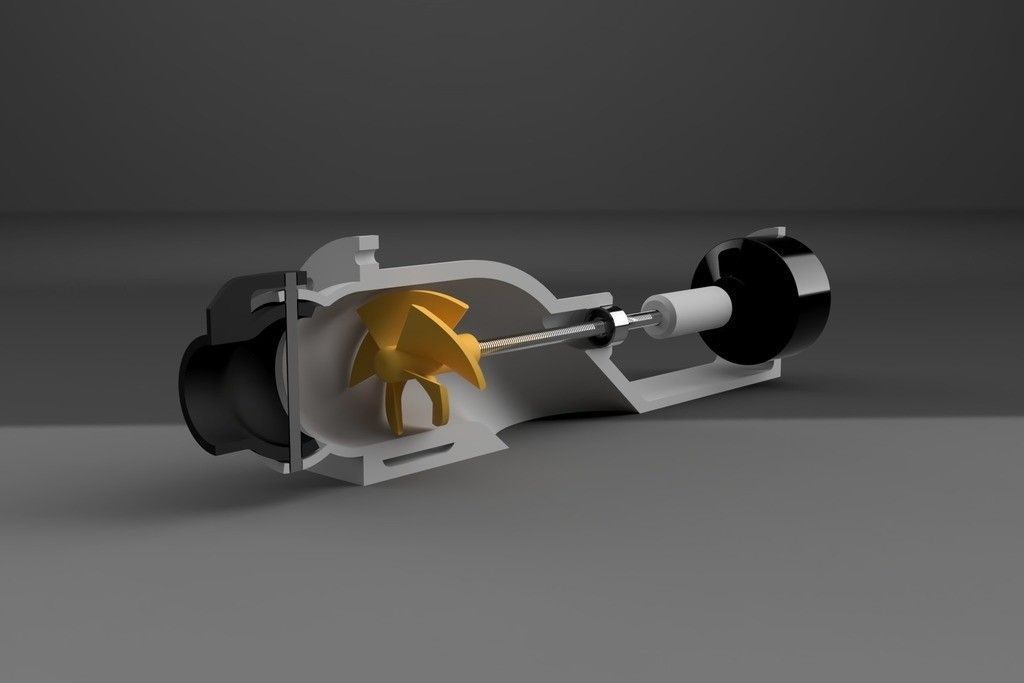
Photo Credits: Maritime Industry Foundation
AM Certifications in the Shipbuilding Industry
As the safety of life and property at sea depends on a different set of criteria as in the automotive and aerospace industry, an entirely new set of standards and rules must be defined to meet the criteria. That is why DNV, a classification society based in Norway, ensures that the processes, materials and equipment used to manufacture critical ship components meet the applicable class requirements. For example, DNV recently issued a verification statement for a ship propeller with a two-meter diameter, made in an AM process by SY Metal in South Korea. In addition, the society also examines different production processes, like Wire Arc Additive Manufacturing (WAAM), Powder Bed Fusion (PBF) or Blown Powder Technology (BPT), conducting tests and setting standards to ensure a safe use of additive manufacturing.
Photo Credits: DNV
MX3D’s 3D Printed Alumninum Boat Keel
Metal 3D printing solutions manufacturer MX3D recently partnered with Dutch custom yacht builder KM Yachtbuilders to design a 3D printed aluminum keel. The entirely custom-made part perfectly demonstrates the possibilities WAAM (Wire Arc Additive Manufacturing) technology has to offer. Because experienced welders are increasingly rare and traditional methods do not allow for customization, the demand for AM in the maritime industry is becoming more and more apparent. Apart from the 3D printed boat Keel, the two Dutch partners aim to soon be able to 3D print other spare parts for any type of boat, as well as finished parts.
The entirely custom-made part perfectly demonstrates the possibilities WAAM (Wire Arc Additive Manufacturing) technology has to offer. Because experienced welders are increasingly rare and traditional methods do not allow for customization, the demand for AM in the maritime industry is becoming more and more apparent. Apart from the 3D printed boat Keel, the two Dutch partners aim to soon be able to 3D print other spare parts for any type of boat, as well as finished parts.
Photo Credits: MX3D
ThyssenKrupp 3D Prints Parts for the Maritime Industry
DNV GL, which specializes specifically in the maritime sector, has given certification to ThyssenKrupp for its 3D printed metal parts. This approval makes ThyssenKrupp the first company worldwide to obtain such certification. What does this mean? It means that the production of components using additive manufacturing has the same level of quality as conventionally manufactured parts and meets the stringent requirements. But this achievement would not have been possible without the help of EOS, a notable partner of the company and supplier of 3D printers to Thyssenkrupp TechCenters. Together the companies are offering innovative solutions for submarines and ships, setting new standards for the navies of the future.
Together the companies are offering innovative solutions for submarines and ships, setting new standards for the navies of the future.
3D Printing for Deepwater Missions
Another application of additive manufacturing is in the creation of underwater equipment, and one of the marine technology companies that has made use of it is ecoSUB Robotics. The company is particularly interested in developing projects at affordable prices, capable of performing deep monitoring missions, and that meet the needs of both its commercial and military customers. To achieve this, they have chosen to implement 3D printing when making prototypes and components, as it is an alternative that allows them to save a lot of money when making their parts, without losing quality in their products. If 3D printing helps make a difference in the creation of these vehicles, it could be a game changer for people in a variety of ocean industries.
Photo Credits: Ecosub
Metal alloys for Marine Applications
Manufacturer 3D Systems has collaborated with Huntington Ingalls Industries’ Newport News Shipbuilding division in order to delivery new 3D printed metal materials for the maritime industry.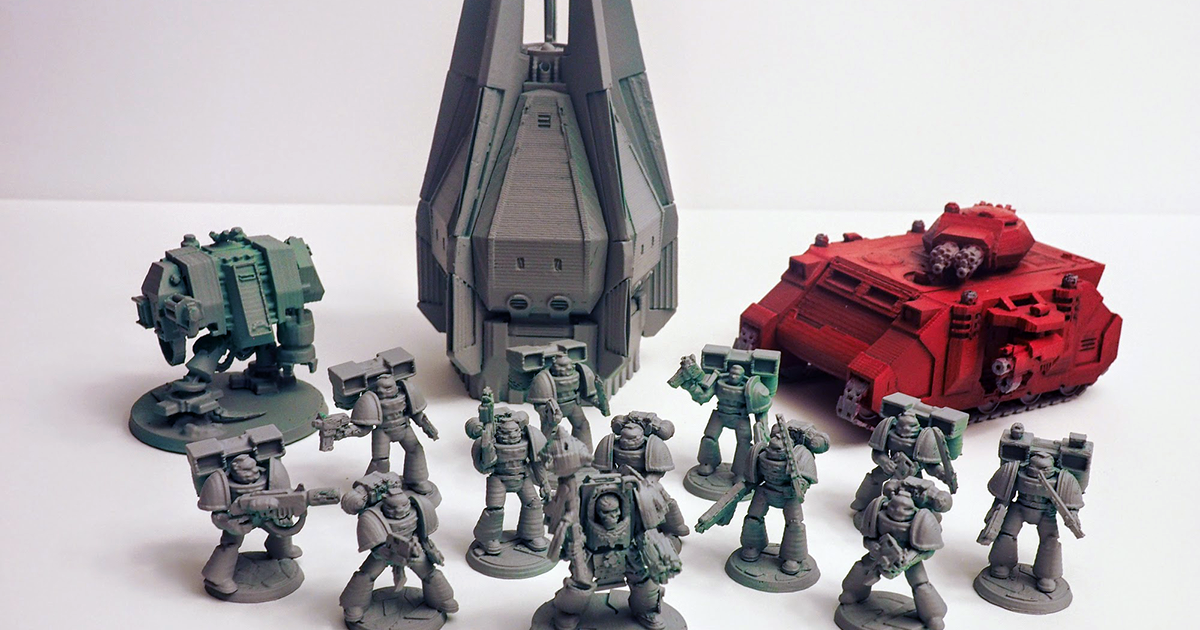 Specifically, they are developing copper-nickel (CuNi) and nickel-copper (NiCu) alloys for powder bed fusion technology. The collaboration of the two companies is of particular interest for maritime applications as these alloys are corrosion resistant. In addition, the use of additive manufacturing in the production of parts will enable the division to reduce lead times in the supply chain by 75%. 3D Systems will be involved in selecting the composition for the alloy, designing the process parameters and qualifying the parts. The alloys and 3D technology will be used to create everything from spare parts for castings to valves, housings and brackets.
Specifically, they are developing copper-nickel (CuNi) and nickel-copper (NiCu) alloys for powder bed fusion technology. The collaboration of the two companies is of particular interest for maritime applications as these alloys are corrosion resistant. In addition, the use of additive manufacturing in the production of parts will enable the division to reduce lead times in the supply chain by 75%. 3D Systems will be involved in selecting the composition for the alloy, designing the process parameters and qualifying the parts. The alloys and 3D technology will be used to create everything from spare parts for castings to valves, housings and brackets.
Photo Credits: 3D Systems
More Eco-Friendly Cargo Ships Thanks to 3D Printing
Earlier this year, Thomas Dahmen, a young researcher at the Technical University of Denmark, came up with a 3D printed injection nozzle. Using the Quality Function Deployment (QFD) matrix, an analysis method for evaluating the potential benefits of additive manufacturing, Thomas Dahmen found a solution for improving injection nozzles. An essential component of ship engines, which is designed to inject fuel into the engine, this part plays a crucial role in fuel consumption, and therefore on the durability of an engine. With the help of modeling and 3D printing, he realized that if the nozzle was curved, then the fuel flowed more efficiently allowing for better combustion.
An essential component of ship engines, which is designed to inject fuel into the engine, this part plays a crucial role in fuel consumption, and therefore on the durability of an engine. With the help of modeling and 3D printing, he realized that if the nozzle was curved, then the fuel flowed more efficiently allowing for better combustion.
Photo Credits: DTU
A 3D Printed Propeller
Back in 2017, in the port of Rotterdam, Rotterdam’s Additive Manufacturing Fiedlab (RAMLAB) 3D printing lab successfully designed a prototype ship propeller with a diameter of 1,350 mm. And advances in propeller printing continue to evolve. In early 2021, Naval Group unveiled a propeller for the mine-hunting ship Andromeda. With a wingspan of 2.5 meters, it was manufactured using WAAM technology. Consisting of five blades weighing 200kg each, the 3D-printed propeller has equivalent or even superior characteristics to traditional propellers, and was designed more quickly and using less material.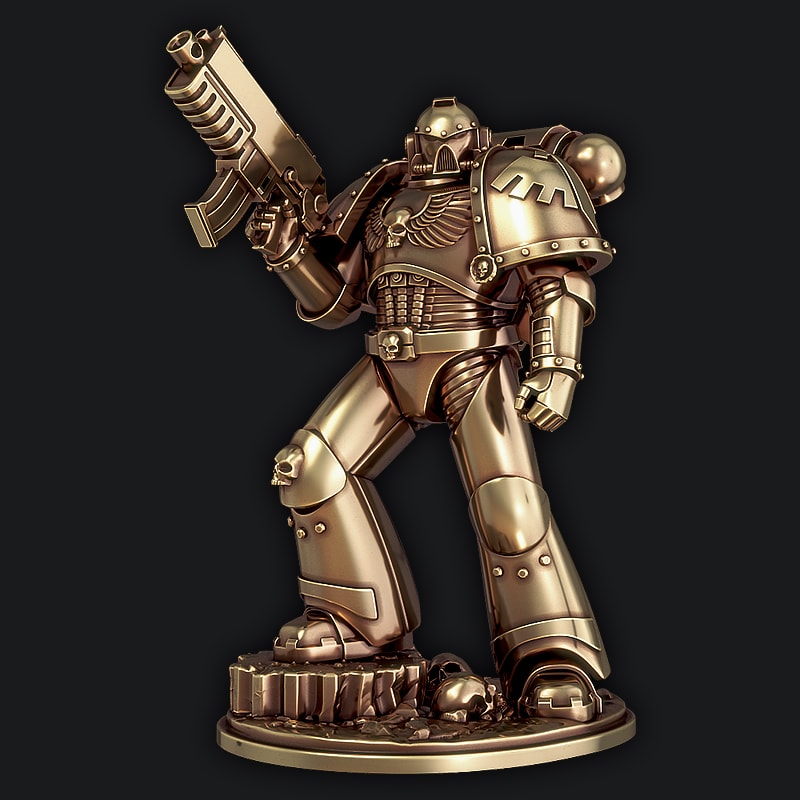
Photo Credits: Naval Group
AMAZEA’s Underwater Scooter
To finish, check out a particular refreshing project: a scooter you can ride underwater. Called AMAZEA, this one was designed by the company JAMADE Germany thanks to large format 3D printing. Indeed, 75% of the scooter’s parts are 3D printed on a BigRep machine. This allows the company to offer a customizable product, both in terms of size and color. AMAZEA is equipped with an electric motor capable of reaching 20 km per hour underwater and can descend to a depth of 18 meters. So, are you ready to explore the ocean floor?
Photo Credits: Amazea
What do you think of our list of 3D printing applications in the maritime sector? Let us know in a comment below or on our Facebook and Twitter pages! Don’t forget to sign up for our free weekly Newsletter, with all the latest news in 3D printing delivered straight to your inbox!
Introduction to 3D printing in the maritime industry
3D printing and additive manufacturing are different catch-all names for the same set of processes. Traditional subtractive manufacturing techniques remove material to form a part, for example on a lathe or a milling machine. In contrast, additive manufacturing either deposits material in layers or selectively hardens material to form the desired shape.
Traditional subtractive manufacturing techniques remove material to form a part, for example on a lathe or a milling machine. In contrast, additive manufacturing either deposits material in layers or selectively hardens material to form the desired shape.
There are seven types of 3D printing technology in common use in 2021:
- Extrusion uses a heated nozzle to extrude material, such as plastic, metal, or cement, to form layers that bond as they cool.
- Vat polymerization uses a focused UV light to harden layers in a vat of photopolymer resin.
- Powder bed fusion relies on laser or electron beams to melt layers of powdered material, such as powdered metals, together.
- Material jetting employs a printhead to lay down layers of UV curable material, which are then cured by successive exposure to UV light.
- A binder jetting printhead deposits drops of binding fluid on a power substrate, hardening it in layers.
- Sheet lamination uses ultrasonic welding or adhesive to bond metal or paper ribbons.
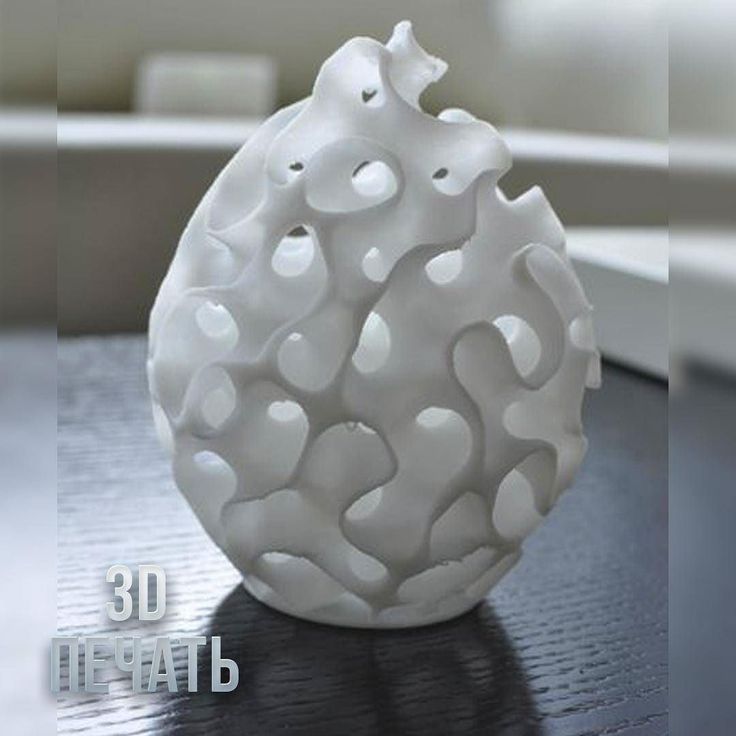 The final shape is completed by subtractive processes.
The final shape is completed by subtractive processes. - In directed energy deposition, a multi-axis nozzle extrudes material, usually metal powders, which are then melted by lasers. This can be used for repairs, or for adding to an existing object.
All 3DP has clear summaries of the strengths and weaknesses of each technique. According to Statista, fused deposition modelling, a form of extrusion, is the most commonly used 3D printing technology in 2020; selective laser sintering, a form of vat polymerisation, is next in line.
3D printing vs traditionally manufactured parts
When it comes to 3D printing in the maritime industry, we need to consider three scenarios:
- 3D printing for rapid prototyping;
- 3D printing spare parts ashore, for delivery to ships; and
- 3D printing spare parts on board ships.
3D printing for rapid prototyping of designs is already well-established and in widespread use across maritime-adjacent industries, including automotive; energy, oil and gas; yachting; aviation; and space. Even in the maritime industry, the use of 3D printing is steadily growing.
Even in the maritime industry, the use of 3D printing is steadily growing.
Over the next few years, we can expect to see increases in both 3D printing parts ashore for delivery to ships, and printing small spares on board.
3D printing has the potential to reduce waste, costs, and emissions. While not perfect, it has many advantages over traditional manufacturing methods and supply chains, particularly for low-volume parts. For the maritime industry, it directly addresses several sticking points in our supply chains.
Customarily, ship spares are shipped from a central warehouse to the ship’s next port. All too often, the parts are shipped to the wrong port, they go missing in transit, the wrong parts arrive, or the required parts are no longer manufactured because the equipment is obsolete.
Customs fees, delivery delays, the cost and emissions involved in shipping parts worldwide and the costs of warehousing parts waiting to be shipped (or collected) make the traditional system costly and inefficient.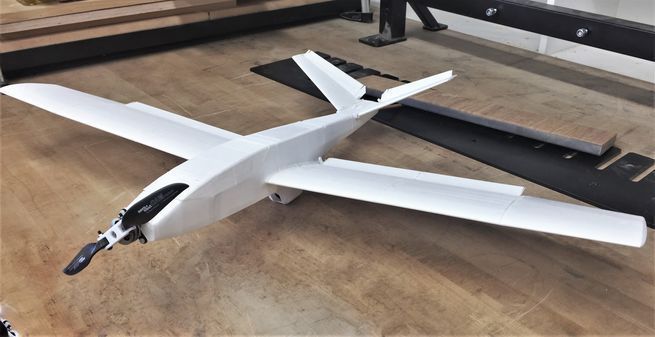 And that’s without considering the cost and waste of replacing equipment when spare parts are no longer available, and the inevitable stress for the crew on board waiting for essential parts.
And that’s without considering the cost and waste of replacing equipment when spare parts are no longer available, and the inevitable stress for the crew on board waiting for essential parts.
Because of the way 3D printers work, the only material consumed in printing a part is exactly what’s needed. Parts designed for 3D printing don’t need the heavy scantlings of cast parts so they use less material than their injection-moulded counterparts. Even better, with the right equipment, any waste from supports or failed prints can be recycled into new filament or pellets to reuse, eliminating waste altogether.
Ships carrying appropriate 3D printers have the potential to print small replacement parts like impellers, valves or pipe fittings on board. This reduces waiting time and allows many repairs to be carried out at sea where there’s more time to focus on the job, improving safety and crew well-being.
In addition, manufacturers and service technicians can keep source files for legacy parts on-hand to print-on-demand and keep older equipment operating.
Problems with 3D printing
Practical concerns
Andy Cole, chief engineer of a ship that carries a basic extrusion printer, agrees that it’s proved useful for small jobs on board; on the other hand, he questions the sense of relying on it. His reservations centre around the slow print speed, the necessity of carrying sufficient print materials, the inherent weakness of the printed parts. Like many consumer products, the printer is sensitive to the power fluctuations of the ship’s electrical system and often needs to be reset. Despite his reservations, he considers those problems surmountable and believes that with appropriate support and crew training, it has potential.
His practical concerns are valid for consumer extrusion printers. However, commercial 3D printing techniques have advanced considerably over the last few years. Since 2017, 3D printed parts using advanced print technology have been used successfully for high-load parts including propellers and crane hooks, and approved by DNV, RINA, Lloyds Register and ABS.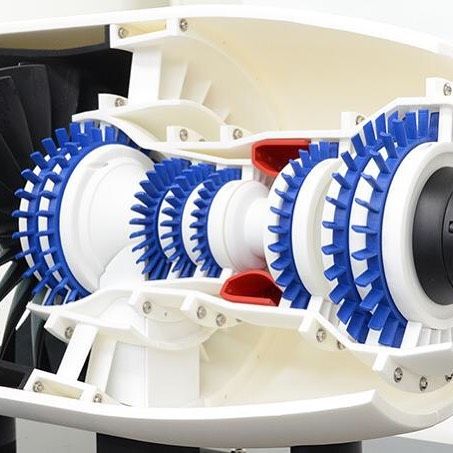 This demonstrates that, when properly made, printed parts can be strong enough to comply with Class requirements.
This demonstrates that, when properly made, printed parts can be strong enough to comply with Class requirements.
Today, not all 3D printing techniques are suitable for all materials, and certain materials need specific printers designed for those materials. As the technology matures, a variety of industrial 3D printers could be kept at key ports, agents’ offices, or even on board ships.
Legal concerns
In the marine industry, the main legal concerns focus on insurance, type-approval, and intellectual property law. We covered the question of type-approval earlier. In general, if key parts are type-approved it won’t impact insurance premiums, so the primary legal concern is that of protecting intellectual property.
In 2017, Create it REAL, part of The Green Ship of the Future Consortium developed a platform that can be integrated into any fused filament fabrication (a common type of extrusion) printer. It increases print speed by a factor of five, and decrypts build files directly on the printer.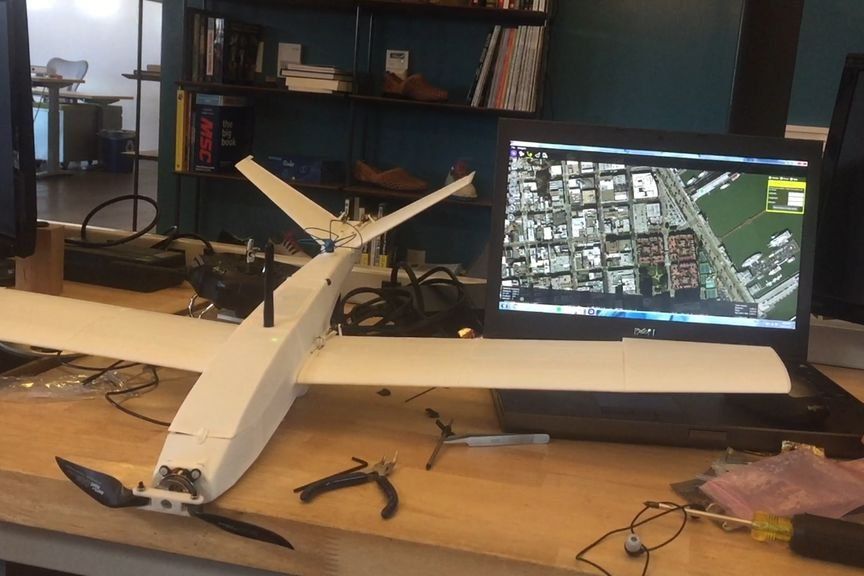
Similar to digital rights management (DRM), manufacturers using the Create it REAL system can send encrypted design files, protecting their intellectual property without negating seafarers’, technicians’, or local suppliers’ ability to print parts as required.
Maritime industry 3D printing projects
Wilhelmsen and the Ivaldi Group
Wilhelmsen partnered with Ivaldi Group in 2017 to disrupt the supply chain for marine parts by replacing the traditional supply chain process with a customized, on-demand, and more efficient process of 3D printing. Their early adopters include Carnival, Thome Group, OSM Maritime Group, Executive Ship Management and Berge Bulk.
From local micro-factories, Wilhelmsen 3D prints and delivers spare parts within hours, lowering the carbon footprint and reducing costs.
Port of Rotterdam
After a 2015 pilot project focussing on 3D printing maritime spare parts, Port of Rotterdam’s consortium expanded from sixteen to twenty-eight companies, including Fokker (aerospace) and Siemens (software development). During the pilot project, they used different materials to 3D print functional propellers, cooled valve seats, spacer rings, hinges, t-connectors, seal jigs, and manifolds to get experience and understanding of the process.
During the pilot project, they used different materials to 3D print functional propellers, cooled valve seats, spacer rings, hinges, t-connectors, seal jigs, and manifolds to get experience and understanding of the process.
In the Innovation Dock at RDM Rotterdam, they are acquiring metal printers and setting up a permanent Fieldlab for the development of knowledge in the area of metal printing, 3D scanning, 3D design and certification.
RAMLAB
RAMLAB specializes in on-demand production of certified metal parts of up to six meters in a variety of metals and alloys using Wire Arc Additive Manufacturing (WAAM) technology. Among other projects, they worked with the Port of Rotterdam to create the WAAMpeller— a 180 kilogram Class-approved nickel aluminum bronze propeller made using WAAM.
The Green Ship of the Future Consortium
Funded by the Danish Maritime Fund, the Green Ship of the Future Consortium is an independent non-profit organization driven and financed by the members. They’re working towards emission-free maritime transport using new technologies and innovation.
With partners that include Maersk, MAN Diesel & Turbo, DNV GL, one of their projects explored 3D printing in the maritime industry, including on-board printing, large-scale 3D printing, 4D printing or repair, and reconditioning with 3D printing.
Conclusion
3D printing saves money, reduces the carbon footprint of supply chains, uses fewer resources, and is convenient for ships and crews. The processes are advancing, and the range of print materials is steadily increasing.
Now that major classification societies and several large maritime companies have given their stamp of approval, 3D printing in the maritime industry can only become more widespread as it matures.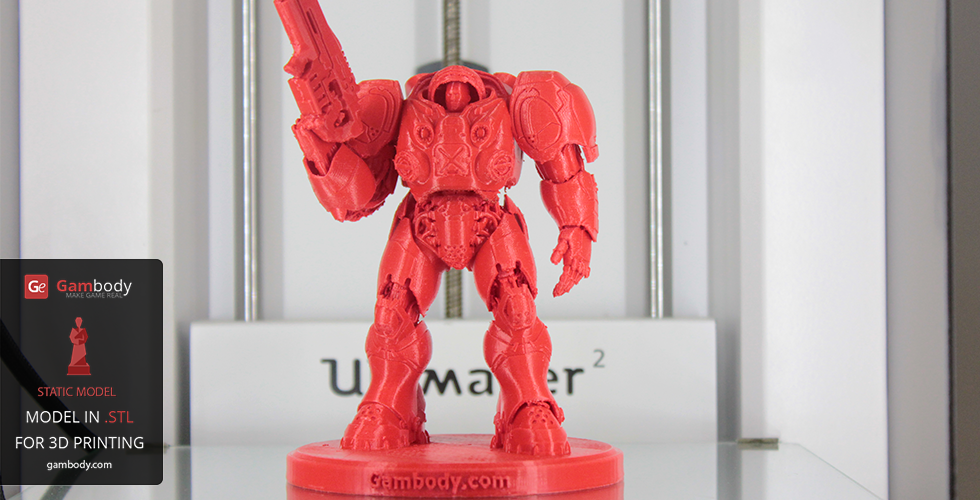
3D printing is certified for the oil and gas and marine industries
Representatives of participating organizations. Photo: 3dprintingmedia.network
Article from 3dprintingmedia.network site translated for you by Top 3D Shop.
Two-year joint research projects to qualify additive technologies in the gas, oil and marine sectors have been completed.
Why it's important: With the introduction of certification of 3D printed parts for oil and gas and marine applications, given their importance and financial capacity, 3D printing will receive an unprecedented boost in development and application, which will affect additive manufacturing in general.
Two two-year joint research projects aimed at qualifying additive technologies in the gas, oil and marine industries have come to an end. These projects, which involved 20 partners from the listed industries, culminated in a gala event in Norway organized by DNV GL and Berenschot.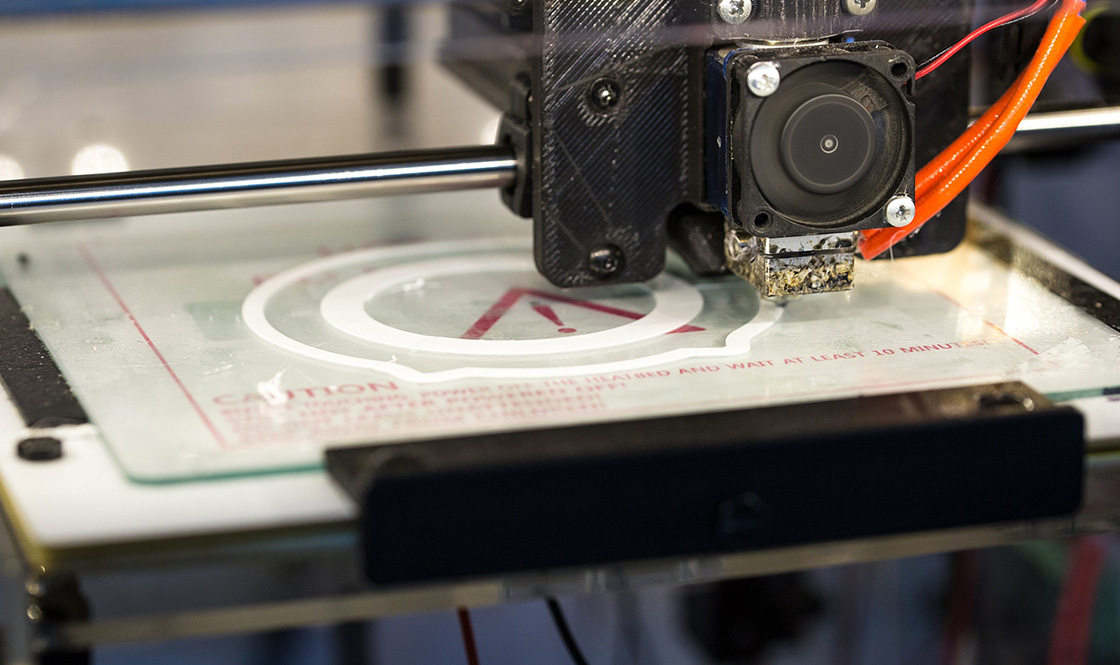
DNV GL is an international organization for business management and quality systems certification, research in these areas, risk assessment and consulting. Berenschot Groep BV is a Dutch consulting company.
The objectives of both projects were to develop guidelines for the certification of parts produced by laser powder melting (LPBF) and wire arc additive manufacturing (WAAM), as well as to create an economic model for the gas, oil and marine sectors. To implement these tasks, partners were involved from all parts of the value chain, including operators, contractors and manufacturers.
Operators, contractors and manufacturers involved in the project. Picture: 3dprintingmedia.network
Among the first category, BP, Equinor, Shell and Total were involved in projects. The contractors were SLM Solutions, Siemens, Technip FMC, IMI Critical Engineering and Kongsberg. Among the manufacturers, the projects were supported by Ivaldi, Aidro Hydraulics, voestalpine, Additive Industries, Sandvik, Immensa Technology Labs, Quintus Technologies, Vallourec, HIPtec, Arcelor Mittal and the University of Strathclyde in Glasgow.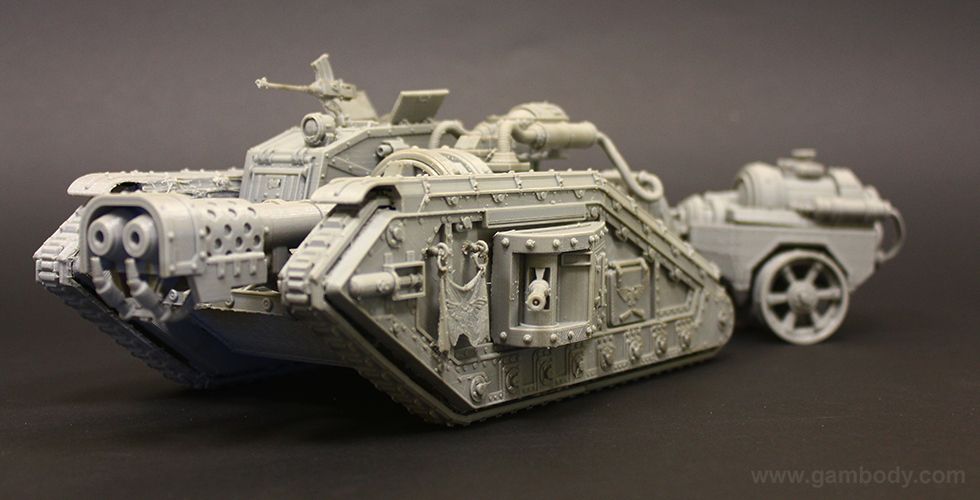
By working together and combining their knowledge in different areas, project participants have made significant progress in developing guidelines and economic models. These achievements were celebrated at the closing ceremony. Also, a new plan of action for the future was created: DNV GL launched two further collaborative projects to continue research and develop an electronic repository program.
Certification Guidelines
The aim of the first project was to develop guidelines for the certification of 3D printed parts for the oil, gas and marine industries.
Senior Managing Consultant Berenschot Groep BV Onno Ponfoort:
“Together with DNV-GL, we are creating leadership to ensure the production of high quality parts for oil and gas production, with a focus on spare parts. In the past, oil and gas companies, especially those operating underwater, have found it difficult to achieve full quality assurance and certify AM parts. Without reliable certification, companies won't use any subsea parts - the risks are too high. All components used must be certified.
Without reliable certification, companies won't use any subsea parts - the risks are too high. All components used must be certified.
The latest version of the guidelines, which DNV GL will assume responsibility for, provides a framework to help manufacturers ensure that metal products and parts produced using 3D printing technologies meet specifications.
A number of tests were carried out to establish guidelines, including the production of a crank disk for Kongsberg using laser powder melting techniques. The manufacturing partner in the case study was the Italian company Aidro, which has shown the ability to use additive manufacturing to create a component that would take 8-10 weeks to produce with traditional methods, in less than one week. The part was made from Inconel 718 using the EOS M29 system.0.
Kongsberg crank disc made by Aidro. Photo: 3dprintingmedia.network
Other case studies in the category of laser melting of powder materials include the production of Equinor impellers made from Inconel 625 (manufactured by SLM Solutions) and titanium alloy Ti-6Al-4V (manufactured by Additive industries) and propellers Kongsberg made from titanium by SLM Solutions.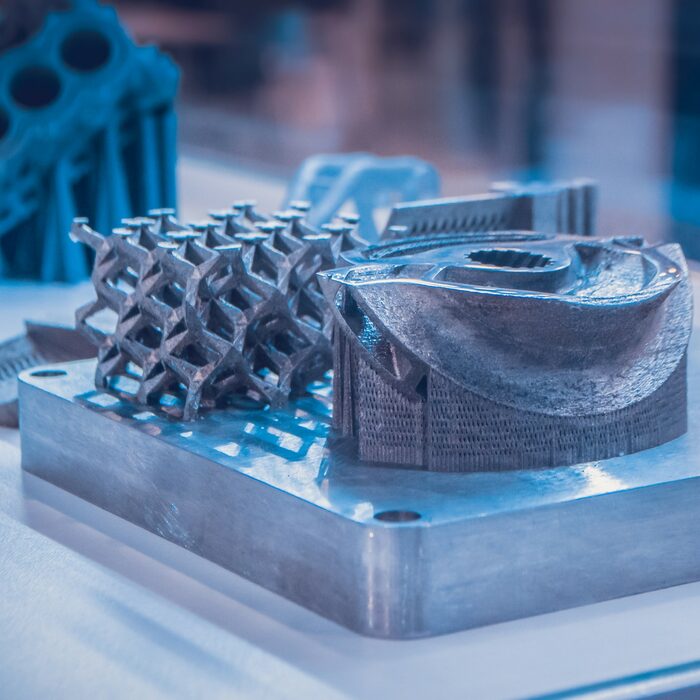 Case studies of wire-arc additive manufacturing technologies included the production of a Vallourec flushing head made from X9 grade low-alloy structural steel0, an Inconel sub for BP, a Kongsberg crank pin in S700 low alloy steel, and an F22 steel alloy sub designed by Technip FMC and Total.
Case studies of wire-arc additive manufacturing technologies included the production of a Vallourec flushing head made from X9 grade low-alloy structural steel0, an Inconel sub for BP, a Kongsberg crank pin in S700 low alloy steel, and an F22 steel alloy sub designed by Technip FMC and Total.
These test cases helped partners understand the difference between traditional and additive technologies, from the beginning of the value chain to the end.
Based on these examples, the partners have compiled guidelines that allow parts to be divided into three categories, depending on the consequences of their failure:
- First class additive manufacturing (AMC 1) for non-critical components;
- Additive Manufacturing Class II (AMC 2) for Medium Critical Components;
- Additive Manufacturing Class III (AMC 3) for critical components.
Depending on the class and applied technology of additive manufacturing, different quality assurance methods are prescribed for different stages of the manufacturing process, including assembly qualification testing, production testing, and part qualification testing.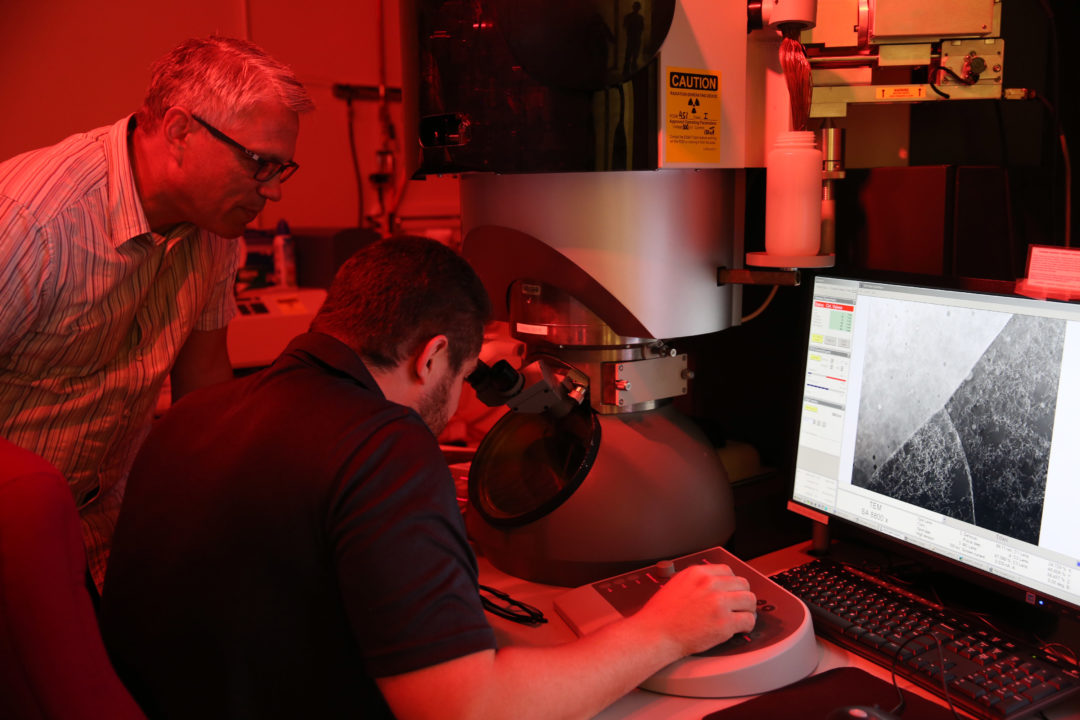
According to the guidelines, all classes of parts must be produced by a process that has passed the specified Assembly Process Qualification Test (BPQT). This qualification ensures that the use of a machine with a certain range of parameters helps to achieve a certain level of quality.
Production testing, in turn, focuses on reproducibility. This qualification ensures that a certain process and set of parameters will result in a similar build quality every time, not just the first build.
Finally, part qualification tests are carried out when the component's critical value requires it. The methodology for these tests differs, depending on the class and specific type of additive technology used.
Business model
Various case studies conducted by the partners also helped them build an understanding of the business implications of AM certification. Through interconnected projects, partners have developed a set of measures to select parts, establish a supply chain and ensure cost efficiency.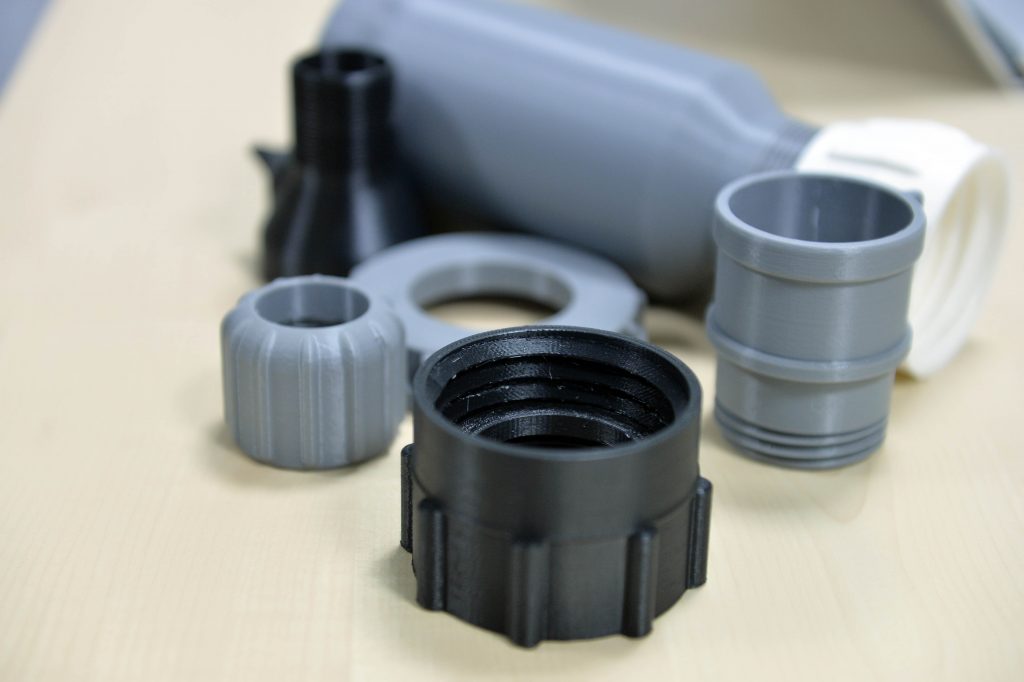 This set of measures is managed by the Dutch consulting firm Berenschot.
This set of measures is managed by the Dutch consulting firm Berenschot.
Overall, the two-year collaborative research projects have made significant progress in qualifying additive manufacturing techniques for use in the demanding gas, oil and marine sectors.
Aidro, one of the partners, provided the following comment:
"The close relationship between the two projects has ensured maximum exchange of knowledge and experience between project members, research institutes, designers, manufacturers, certification bodies and end customers."
Completed and future projects will be integral to the implementation of additive technologies in the gas, oil and marine industries.
For more up-to-date additive manufacturing news, visit the Top 3D Shop Blog.
PROJECT "INTELLIGENT PRODUCTION TECHNOLOGIES OF LARGE FORMAT 3D PRINTING FOR MARINE FLEET TASKS" TAKEN FIRST PLACE IN THE ALL-RUSSIAN COMPETITION OF THE MINISTRY OF DEFENSE OF THE RUSSIAN FEDERATION
You are here
Home
JUNIOR SCIENTIST OF THE LABORATORY OF MARINE ROBOTICS OF THE SCIENTIFIC AND INNOVATIVE "MARITIME TECHNOPARK" MSU N.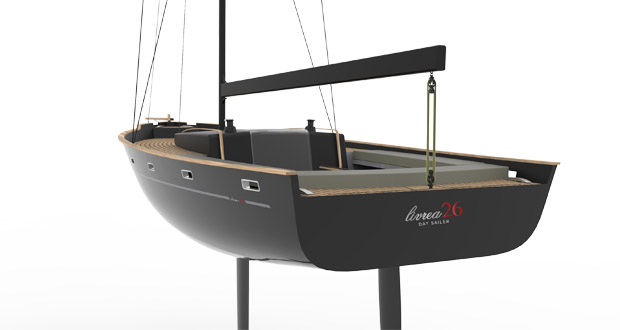 A. ADM. G.I. NEVELSKY, POSTGRADUATE STUDENT DENIS ANDREEVICH KOROVETSKY TAKEN FIRST PLACE IN THE ALL-RUSSIAN COMPETITION OF RESEARCH WORKS HELD BY THE MINISTRY OF DEFENSE OF THE RUSSIAN FEDERATION IN THE FIELD OF ARTIFICIAL INTELLIGENCE TECHNOLOGIES, MILITARY, DUAL AND SPECIAL PURPOSE.
A. ADM. G.I. NEVELSKY, POSTGRADUATE STUDENT DENIS ANDREEVICH KOROVETSKY TAKEN FIRST PLACE IN THE ALL-RUSSIAN COMPETITION OF RESEARCH WORKS HELD BY THE MINISTRY OF DEFENSE OF THE RUSSIAN FEDERATION IN THE FIELD OF ARTIFICIAL INTELLIGENCE TECHNOLOGIES, MILITARY, DUAL AND SPECIAL PURPOSE.
On February 8, an awards ceremony will take place in Kubinka, and Russian Defense Minister Sergei Kuzhugetovich Shoigu will present prizes to young scientists, the press service of the university reports.
In the scientific project "Intelligent manufacturing technologies for large-format 3D printing for marine tasks", it was proposed to replace the traditional methods of manufacturing large master models and functional elements used in shipbuilding and ship repair with 3D printing. It was also proposed to equip 3D printing equipment with artificial intelligence - a neural network for tracking 3D printing defects online around the clock (since large-scale printing can take more than a day).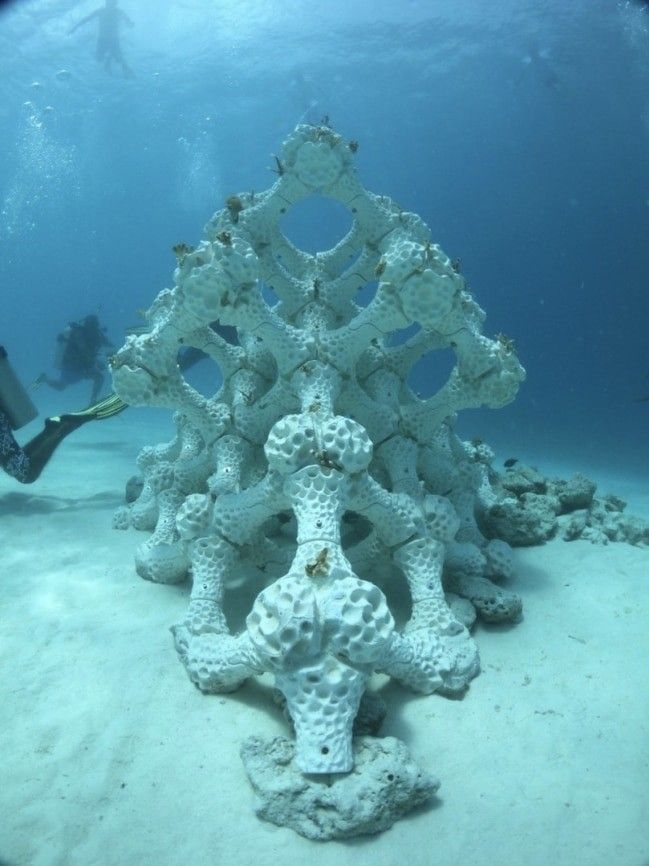 Such use of artificial intelligence not only improves economic performance, but also brings the quality and accuracy of printing to a very high level.
Such use of artificial intelligence not only improves economic performance, but also brings the quality and accuracy of printing to a very high level.
Today, the scientific and production area of additive technologies is actively developing in the scientific and innovative Marine Technopark. Postgraduate student and at the same time junior researcher D.A. Korovetsky designed and manufactured a laboratory model of a large-format fast 3D printer that allows printing parts with a size of 860 * 710 * 530mm. The hardware part was also developed, containing current solutions in 3D printing devices: ball screws (ball screw) instead of the traditional belt drive, servo motors with feedback. The load capacity of the equipment beams was calculated when operating at high accelerations, which allows increasing the speed of large-format printing.
In a scientific project for the Ministry of Defense of the Russian Federation, it was proposed to apply the achievements of generative (bionic) design, namely, generative (bionic) design algorithms that make it possible to make products of high strength, while being lighter in weight and with lower material costs. According to IDC analysts, in the coming years, global sales of 3D printing technologies (equipment, consumables, software and services) will grow by an average of 18.4% per year and will reach $ 23 billion by 2022.
According to IDC analysts, in the coming years, global sales of 3D printing technologies (equipment, consumables, software and services) will grow by an average of 18.4% per year and will reach $ 23 billion by 2022.
Today, there are a number of enterprises in the world that actively use additive technologies in shipbuilding and ship repair. Based in the Netherlands, RAMLAB, an additive manufacturing lab at the seaport of Rotterdam, uses six-axis robotic arms to produce shipbuilding spare parts and small and large marine components.
Create it REAL - production on board. Danish company Create it REAL, which operates primarily as a research and development center for 3D printing, aims to ensure the manufacture of spare parts on board ships at sea. The company's proprietary 3D printing platform can be integrated with any 3D printer, and the company offers sophisticated file encryption to ensure intellectual property rights are protected. Based in France, Sculpteo offers an end-to-end prototyping solution that allows architects to render high-detail miniature models directly from CAD.